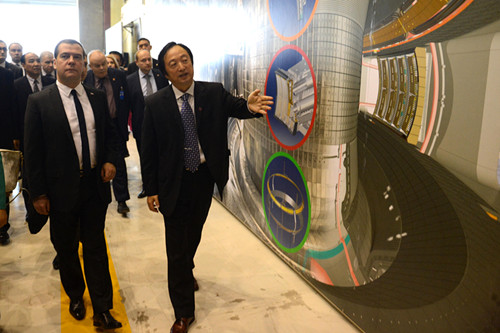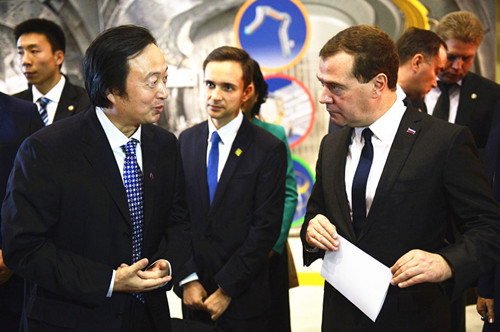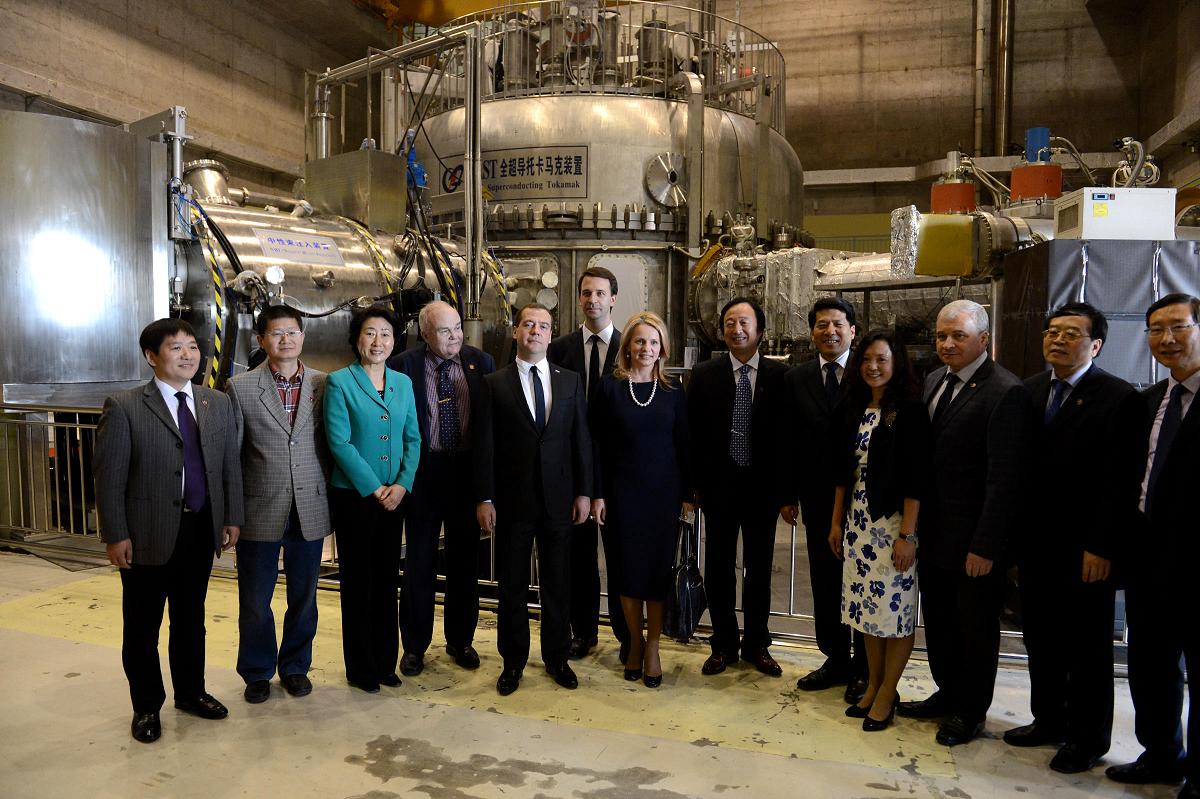Russian Prime Minister Dmitry Medvedev visited Institute of Plasma Physics, Chinese Academy of Sciences (ASIPP) early Wednesday afternoon,October 23 to start his science and technology trip in Hefei.
Accompanying PM Medvedev are Mr Cheng Guoping, vice minister of Ministry of Foreign Affairs of China, Mr Andrey Denisov, ambassador of Russia Embassy in China, Mr Li Hui, ambassador of Chinese Embassy in Russia, Academician E. Velikhov, president of Russian Kurchatov Institute (KI) and other local government officials.
PM Medvedev was welcomed by Prof Jiangang Li, director of ASIPP and his deputies upon his arrival.
At EAST hall, Prof Li highlighted twenty years’ bilateral fusion cooperation between China and Russian in his introduction, from T-7 to HT-7, from EAST to ITER. Chinese fusion research has developed quickly thanks to Russian scientists’ tokamak concept, introduction of T-7 tokamak and collaborations between ASIPP and Kurchatov Institute, D.V. Efremov Scientific Research Institute of Electrophysical Apparatus and other institutes. PM Medvedev commends the fusion cooperation, and is happy to learn that the cooperation has expanded to accelerator and other areas.
Prime Minister Dmitry Medvedev paid the visit during his two-day state visit to China at the invitation of Chinese Premier Li Keqiang. Hefei is Premier Li' hometown.

Russian Prime Minister Dmitry Medvedev visited ASIPP

Dmitry Medvedev and Prof. Li, director of ASIPP

Group photo before EAST tokamak
Background:
T-7 tokamak is the first superconducting tokamak in the world, built in 1980 by Russia Kurchatov Institute. It had run for five year after fulfilling its scientific mission – to explore the feasibility of using superconductors on fusion experiment device, to accumulate engineering and operation experience for large superconducting tokamaks.
In early 1990s, RRC “Kurchatov Institute” transfered T-7 tokamak, together with its cryogenic, power supply and other subsystems to ASIPP as a gift. ASIPP — with the participation and assistance of Russian scientists, rebuilt the T-7 Tokamak, which was renamed "HT-7" (the "H" stands for Hefei).
HT-7, China's first—superconducting tokamak, entered service in 1995 and retired in May 2013 after completing its tasks, running nearly 20 rounds of experiments, discharging 11,800 plasma shots,?nurturing three generations of Chinese fusion scientists and achieving a 400-second record in long plasma discharges.
Based on the experience and manpower training?resulting from HT-7 exploitation, ASIPP built EAST in 2006, the first fully superconducting tokamak in the world. During EAST construction and operation, ASIPP have received strong supports and generous help from world fusion communities, including our Russian collaborators. |